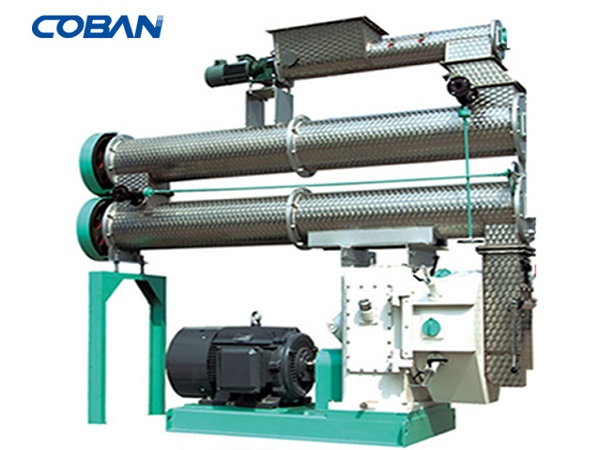Differences Between Flat Die Pellet Machines and Ring Die Pellet Machine
In the fields of feed processing, agriculture, and biomass fuel production, pellet machines play a crucial role. Among them, flat die pellet machine and ring die pellet machines are two major types of equipment, each with its unique advantages and applications.
- Cattle feed production line procurement in Philippines
- Cattle Feed Production Line Manufacturer in Philippines
- Cattle Feed Production Line Price in Philippines
- Cattle Feed Production Line Supplier in Philippines
- Maintenance Methods for Cattle Feed Production Line in Philippines
- Cattle Feed Production Line Sales in Philippines
- Structure composition of cattle feed production line in Philippines
- Installation Process of a Cattle Feed Production Line in Philippines
- Main advantages of Cattle Feed Production Line in Philippines
- Main functions of cattle feed production line in Philippines
introduction
In the fields of feed processing, agriculture, and biomass fuel production, pellet machines play a crucial role. Among them, flat die pellet machine and ring die pellet machines are two major types of equipment, each with its unique advantages and applications. Understanding the differences between flat die pellet machine and ring die pellet machines can help users choose the right equipment based on their specific needs. This article will explore the key differences between these two types of pellet machines, providing a comprehensive understanding of their features and applications.


Features of Flat Die Pellet Machine
1. Working Principle
The working principle of a flat die pellet machines involves feeding raw materials into the machine’s flat die, where rollers compress the material into pellets. The flat die has multiple small holes on its surface. Raw materials are forced through these holes under high pressure by the rollers, forming pellets. This design makes flat die pellet machine particularly suitable for processing harder materials such as straw and wood chips.
2. Pellet Quality
Pellets produced by flat die pellet machine typically have higher density and better hardness. This results from the die’s design and the pressure exerted by the rollers, which ensures that the raw materials form compact pellets. Such pellets are not only more palatable but also less likely to break during transportation and storage.
3. Application Range
Flat die pellet machines are widely used in feed processing, organic fertilizer manufacturing, and wood pellet fuel production. Their efficient compression capabilities and good handling of hard materials make them outstanding in these applications. They are especially advantageous in processing various agricultural residues and biomass fuels.
4. Maintenance and Operation
The structure of flat die pellet machine is relatively simple, making operation and maintenance easier. Regular checks and replacements of the die and rollers are necessary, but overall maintenance costs are low. Users can adjust the die hole size and roller pressure to meet different production needs, enhancing production flexibility.
Features of Ring Die Pellet Machine
1. Working Principle
Ring die pellet machines operate differently from flat die machines. They use a ring-shaped die, where raw materials are fed into the interior of the ring die and compressed into pellets by rollers. The material is pressed against the inner wall of the ring die, forming pellets which are then extruded through the die’s holes.
2. Pellet Quality
Pellets produced by ring die pellet machines usually exhibit higher uniformity and stability. The design of the ring die ensures even pressure distribution during compression, resulting in more consistent pellet quality. Ring die pellet machines are ideal for producing high-quality feed and specialized fertilizers.
3. Application Range
Ring die pellet machines are primarily used for high-standard feed processing and refined fertilizer manufacturing. They meet the production needs requiring high pellet quality, especially where uniformity and density are crucial. Additionally, ring die pellet machines can handle a wide range of raw materials with high adaptability.
4. Maintenance and Operation
Ring die pellet machines have a more complex structure, requiring higher maintenance and operational expertise. The extensive contact area between the ring die and rollers demands detailed and regular maintenance. Moreover, these machines often come with advanced control systems, making operations more intelligent but also increasing maintenance and operational costs.


Key Differences Between Flat Die Pellet Machine and Ring Die Pellet Machines
1. Die Design
Flat die pellet machines use a flat die for compressing materials, whereas ring die pellet machines use a ring-shaped die. This design difference determines the working principle and pellet characteristics of each machine.
2. Pellet Quality
Flat die pellet machine produce higher-density pellets suitable for hard materials. Ring die pellet machines create more uniform pellets, ideal for applications with strict quality requirements.
3. Application Range
Flat die pellet machines are used broadly in feed processing, organic fertilizer, and biomass fuel production. Ring die pellet machines are mainly used for high-standard feed and refined fertilizer production.
4. Maintenance and Operation
Flat die pellet machine are simpler in structure, making maintenance and operation easier and suitable for various production environments. Ring die pellet machines have a more complex structure, requiring more detailed maintenance and operation but offering higher production efficiency and pellet quality.
Conclusion
Flat die pellet machine and ring die pellet machines each have distinct advantages and applications. Understanding the differences between these two types of pellet machines helps users select the appropriate equipment based on their specific needs. Whether you need a flat die pellet machine for handling hard materials or a ring die pellet machine for high-quality pellets, each can effectively support your production. We hope this article provides a thorough understanding of the features of flat die and ring die pellet machines, aiding in making an informed equipment choice.








